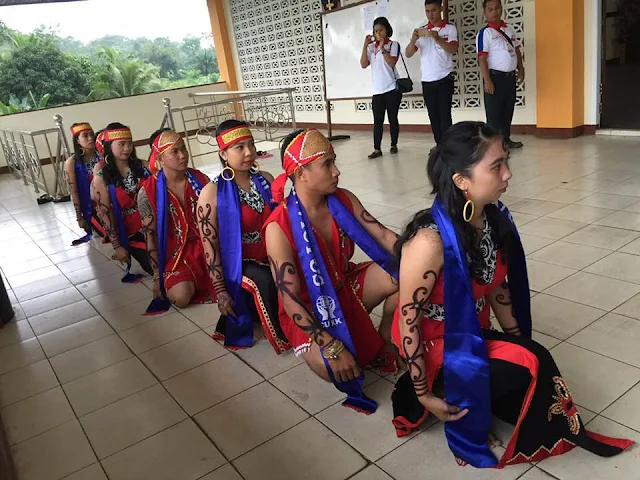As a student at the Widya Philosophy and Theology College in Malang (1985-1999), the author was part of a discussion and writing group.
Some members of this group went on to become national-level writers, such as Nico Andas Putra, who wrote and published a monograph about his ethnic group, the Dayak Kanayatn (Lembaga Literasi Dayak, 2017).
Dayak Writing from Within
Besides Nico, other members of the discussion and writing club included Kalvin, Laurentius Doby, and Serafinus Jompau. They also showed interest in and conducted research on the Dayak people, with topics ranging from marriage customs (Jompau) to indigenous ancestral beliefs (Doby).
Outside the “Dayak STFT WD” writers' club, there were Djuweng, Julipin Stanza, and Edy Petebang. They were former classmates at St. Paul High School in Nyarumkop, West Kalimantan, who attended the renowned Tanjungpura University in Pontianak, West Kalimantan.
We often engaged in written discussions, critiquing each other’s work. Julipin and I, for instance, frequently had heated debates about the origins of the Dayak people, to the point of straining our vocal cords. These debates can be found in the archives of Fokus magazine at the time, a critical rival of Tempo.
In the years to come, they honed their skills and emerged as young intellectuals and writers in Pontianak, playing significant roles in the effort to establish and promote Dayak literacy. Without any embellishments and with a clear motto, such as the Lembaga Literasi Dayak,
Juweng, Julipin, and others (along with Paulus Florus and other young Dayak intellectuals) collaborated with the Indonesian Bishops' Conference (LP3S-KWI) to establish the Institute of Dayakology Research and Development (IDRD), the precursor to the Dayakology Institute (ID).
 |
| Dance, as a form of art, is one of the manifestations of Dayak culture that remains preserved and vibrant to this day. |
In its golden era, before its office on Imam Bonjol Street burned down along with its archives, the IDRD, through its Kalimantan Review magazine, was highly respected and served as a reference due to its quality research and publications. Hundreds of folklores were studied, documented, and analyzed, along with arts, culture, customs, and more.
Dayak Culture Seminar in Pontianak, West Kalimantan, in 1992
This institution also played a crucial role in organizing the International Dayak Culture Seminar in Pontianak, West Kalimantan, in 1992.
The seminar was attended by Dayak representatives from various parts of Borneo, as well as intellectuals, scholars, researchers, and writers from outside the Dayak community. Although I was not physically active in the seminar, my role was quite significant. When Paulus Florus, one of the key figures at IDRD, contacted me as a representative of PT Grasindo Publishers in Jakarta, a sister company of the Kompas Gramedia Group, I played a pivotal role.
The proceedings of the International Dayak Culture Seminar in Pontianak were significant in both content and impact.
After the seminar, papers, presentations, and transcripts were compiled and edited by Paulus Florus, with an introduction by Michael R. Dove.
Although the publication of the proceedings was funded by the IDRD, out of respect and to adhere to proper protocol, I sought permission from and informed the higher-ups at Kompas Gramedia. I was received by August Parengkuan on the fourth floor of the Kompas office on Palmerah Selatan Street 22, Jakarta.
After presenting the contents, which were the results of the seminar's presentations, Agus gave the green light. There were no obstacles. Thus, the book was published with a cover dominated by black, red, and white—the distinctive colors of the Dayak.
-- Masri Sareb Putra















